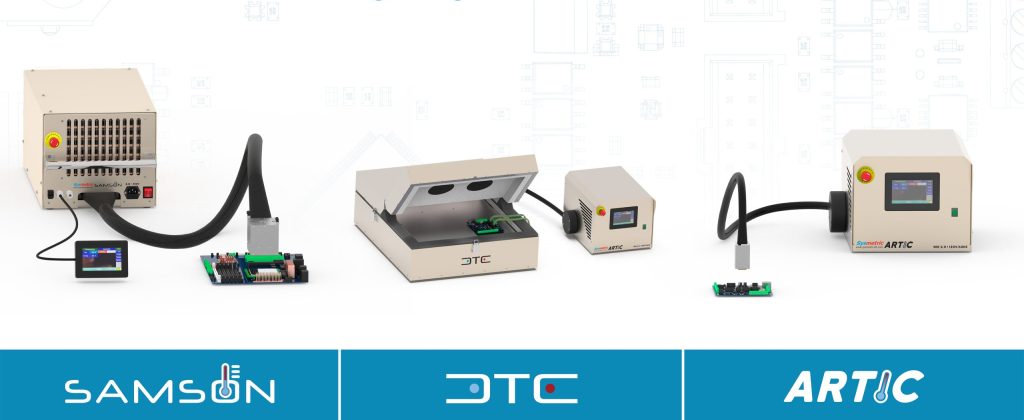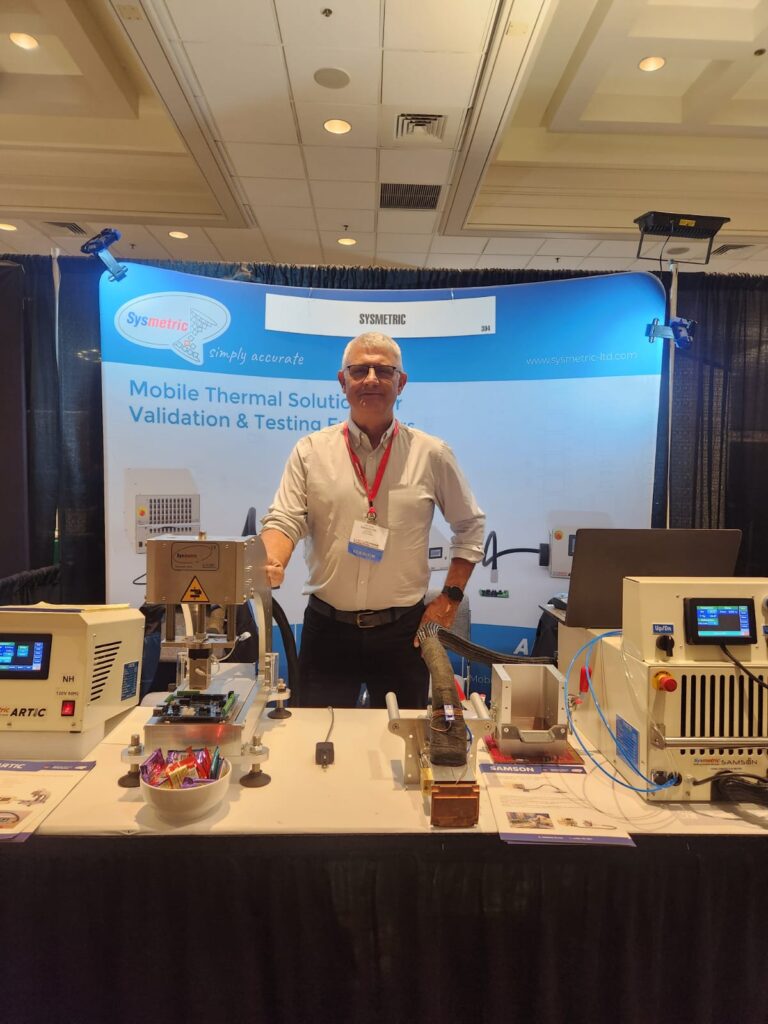Silicon Thermal Validation short Introduction
Thermal validation is a critical process in the electronic testing industry, ensuring that components perform reliably under different temperature conditions. In sectors like automotive electronics, where safety and performance are paramount, post-silicon thermal validation plays an essential role in verifying the thermal stability of integrated circuits (ICs) and semiconductor devices.
The Importance of Thermal Validation in Electronics
Electronic components generate heat during operation, and excessive temperatures can lead to performance degradation, reliability issues, and even failure. Thermal validation involves measuring, analyzing, and optimizing the thermal behavior of these components to ensure they function effectively within their specified temperature ranges.
For automotive electronics, where extreme temperatures are common, robust thermal solutions for electronic testing are essential. Sensors, processors, and control modules in modern vehicles must withstand high and low temperatures while maintaining performance and durability.
Key Steps in the Thermal Validation Process
1. Temperature Profiling
Understanding how a device responds to temperature changes is crucial. Engineers use thermal sensors and infrared imaging to monitor heat distribution and detect hot spots. This step helps identify areas where thermal management improvements are needed.
2. Stress Testing Under Extreme Conditions
Electronic components are subjected to high and low temperatures, thermal cycling, and humidity tests to assess their durability. This step ensures that the device meets industry standards for temperature stability and operational safety.
3. Thermal Simulation and Modeling
Advanced simulation software allows engineers to predict how heat will dissipate across a device. This method is particularly useful in post-silicon thermal validation, where real-world testing can be expensive and time-consuming. Thermal modeling helps optimize the design before physical testing.
4. Cooling and Heat Dissipation Solutions
Once thermal challenges are identified, engineers develop custom cooling solutions, such as heat sinks, thermal interface materials, and active cooling methods. These solutions enhance the longevity and efficiency of electronic components.
Post-Silicon Thermal Validation in Automotive Electronics
In the automotive industry, electronic systems must undergo extensive post-silicon thermal validation before they are integrated into vehicles. This phase verifies that the final silicon chip meets design expectations and can handle real-world temperature fluctuations.
Challenges in Automotive Thermal Validation
- Extreme Environmental Conditions – Automotive electronics must operate in temperatures ranging from -40°C to +125°C.
- High Power Density – With the rise of electric vehicles (EVs) and advanced driver-assistance systems (ADAS), thermal loads are increasing.
- Long-Term Reliability – Components must remain stable over years of operation without performance degradation.
Silicon Thermal Validation: Ensuring Reliability Across Automotive, Drone, and Defense Electronics
In today’s rapidly advancing technological landscape, electronic systems are becoming increasingly integral across diverse industries, from automotive to drones and defense. Thermal validation, a critical process, ensures these components maintain optimal performance and reliability under a wide array of environmental conditions. This process is essential for preventing overheating, performance degradation, and potential failures that can compromise safety and operational efficiency.

The Fundamental Importance of Thermal Validation
Electronic components, regardless of their application, generate heat during operation. Uncontrolled temperatures can lead to significant issues, including reduced performance, reliability concerns, and catastrophic failures. Thermal validation addresses these challenges by meticulously measuring, analyzing, and optimizing the thermal behavior of these components, ensuring they function reliably within their specified temperature ranges.
Automotive Electronics: Engine control units (ECUs), sensors, processors, and battery management systems (BMS) must withstand extreme temperatures and conditions.
Drone Industry:Flight controllers, cameras, communication systems, and battery systems require robust thermal management for stable and reliable operation.
Defense Industry: Communication systems, radar, navigation systems, and weapon systems must maintain operational readiness in diverse and harsh environments.
Key Stages of the Thermal Validation Process:
1. Temperature Profiling: Utilizing thermal sensors and infrared imaging to monitor heat distribution and identify critical hot spots.
2. Thermal Stress Testing: Subjecting components to extreme temperature ranges (-40°C to +125°C), thermal cycling, and humidity tests to assess durability.
3. Power Cycling and Thermal Shock Testing: Measuring the effects of frequent power state changes and rapid temperature fluctuations to detect potential thermal expansion-related failures.
4. Thermal Modeling and Simulation: Employing advanced simulation software to predict heat dissipation patterns and optimize cooling solutions before physical testing.
5. Real-World Testing: Assessing component performance under actual operating conditions, including on-road testing for automotive and in-field testing for drones and defense.
Post-Silicon Thermal Validation: Ensuring Real-World Reliability:
Post-silicon thermal validation plays a crucial role in verifying the thermal stability of integrated circuits (ICs) and semiconductor devices. This process ensures that final silicon chips meet design expectations and can handle real-world temperature fluctuations before mass production.
Thermal Validation in the Drone Industry:
Drones operate in diverse and often challenging environments, demanding robust thermal management. Key considerations include:
Flight Stability: Ensuring flight controllers and navigation systems maintain stability under varying temperatures.
Camera and Sensor Performance: Maintaining accuracy in thermal imaging and sensor systems.
Battery Management: Optimizing battery performance and preventing overheating for extended flight duration and safety.
Thermal Validation in the Defense Industry:
Defense electronics are subjected to extreme conditions, requiring rigorous thermal validation to ensure operational readiness. Key considerations include:
Operational Readiness: Maintaining system functionality in diverse climates and harsh environments.
Communication Integrity: Ensuring stable communication systems under extreme temperatures.
Weapon Systems Reliability: Guaranteeing accuracy and reliability in mission-critical weapon systems.
Advanced Thermal Solutions for Electronic Testing:
Thermal Chambers: Simulating real-world conditions for accurate validation.
Liquid Cooling Systems: Providing efficient heat dissipation for high-power electronics.
Precision Heaters and Chillers: Maintaining controlled temperature conditions during testing.
Thermal Interface Materials (TIMs): Enhancing heat dissipation between components.
Advanced Heat Sinks and Thermal Spreaders: Distributing heat effectively to prevent localized overheating.
Advanced Thermal Solutions for Electronic Testing in Cars
Companies specializing in thermal solutions for electronic testing provide high-precision temperature control systems to ensure that automotive components perform optimally. These solutions include:
- Thermal Chambers – Simulate real-world conditions for accurate validation.
- Liquid Cooling Systems – Provide efficient heat dissipation for high-performance electronics.
- Precision Heaters and Chillers – Maintain controlled temperature conditions during testing.
Why Thermal Validation is Essential for the Future of Electronics
As electronics become more powerful and compact, managing heat efficiently is more critical than ever. Innovations in thermal testing and validation ensure that automotive and industrial electronics remain safe, reliable, and high-performing.
With the right thermal solutions, manufacturers can enhance product quality, reduce failure rates, and meet regulatory standards, ensuring the long-term success of their products.
For more information on thermal validation solutions, contact us Sysmetric TFS.

